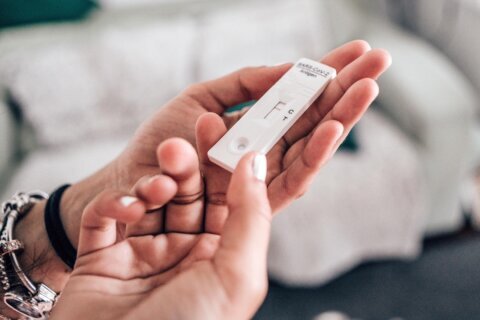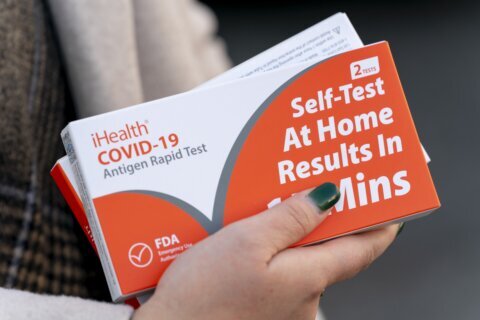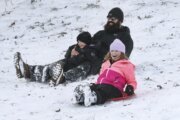The US Centers for Disease Control and Prevention’s newly loosened masking and physical distancing guidelines for people fully vaccinated against Covid-19 doesn’t include children under age 12.
That’s because the 49 million US kids younger than 12 don’t yet qualify for any of the Covid-19 vaccines.
The CDC’s guidance says that unvaccinated people still need to wear masks, which means all of those in the under 12 age group.
We turned to CNN Medical Analyst Dr. Leana Wen to see what parents and their younger kids can do next. Wen is an emergency physician and visiting professor of health policy and management at the George Washington University Milken Institute School of Public Health. She’s also the author of the forthcoming book “Lifelines: A Doctor’s Journey in the Fight for Public Health.”
CNN: What does the CDC’s Thursday decision on masking mean for children younger than 12?
Dr. Leana Wen: It’s a dilemma. I have two little children, ages 1 and 3, who can’t yet be vaccinated. I understand how parents are feeling.
The CDC’s new guidance only applies to people who are fully vaccinated. That means my husband and I, who are now both fully vaccinated, no longer need to wear masks or distance when we’re out in the public around others. The CDC is saying that those who are unvaccinated should still wear masks and socially distance, so nothing changes for our children.
CNN: To confirm, children younger than 12 still need to wear masks, right?
Wen: Correct. The CDC hasn’t changed guidance for unvaccinated children — or anyone who is unvaccinated. At the moment, unvaccinated children still need to mask when they can’t keep 6 feet away from others.
I would modify this a bit. We know that outdoors is much safer than indoors. I’m fine with my kids playing outdoors with other unvaccinated children, without masks, even if they’re within 6 feet. But if they are indoors, they should definitely wear masks, and so should other unvaccinated people.
CNN: How should vaccinated parents approach the new CDC guidance, if they have unvaccinated children, including those under age 12, who can’t get the vaccine yet?
Wen: This gets complicated. Here’s what we know, based on the science. We know that getting the vaccine protects you from getting infected with Covid-19. Even if you get infected, you have a much lower chance of spreading it to others. But that risk still exists.
How vaccinated people should approach changing their behavior depends on their risk tolerance. Some parents will say, “The risk of my getting sick and then infecting my kids is very low, and I want to resume all aspects of my pre-pandemic life.” That’s reasonable. Some others are more cautious, especially if they live in areas of high community transmission of Covid-19. That’s also fine.
For my family, where we live in Baltimore still has high Covid-19 spread, and the rates of vaccination are low. We still want to be cautious. That means my husband and I will attend any outdoor event without reservation, but indoors, we will still wear masks unless we are certain the people we’re in close contact with have also been vaccinated.
We’d go to indoor dinners with our vaccinated adult friends. We’d go to outdoor restaurants or relatively uncrowded indoor restaurants. We’d get on a plane where masks are required. But we wouldn’t go to an indoor exercise class where maskless people are breathing heavily, in close quarters, and we don’t know if they’re vaccinated. For church services, when we’re around others of unknown vaccination status, we’d keep our masks on, and the same when we go to the grocery store.
CNN: What about people who have children 12 and older who get the vaccine, and children younger than 12 who can’t yet? Should everyone mask up?
Wen: If there are people in the same family, some of whom have had the vaccine and some have not, they don’t need to mask around one another. The family, as a unit, should decide what your risk tolerance is when out in public.
Let’s say that there is a 15-year-old who is now vaccinated, but a 10-year-old who’s not yet. If the family has the same low risk tolerance as my family does, then they might decide that the 15-year-old should still stay safe and reduce risk by having indoor, maskless get-togethers only with other fully vaccinated people. Sleepovers can happen, but only with other vaccinated friends. If they went shopping and there are lots of unvaccinated, maskless people around in a crowded mall, they should still wear masks.
CNN: What if my unvaccinated 11-year-old has asthma or is otherwise immunocompromised?
Wen: You should have a lower risk tolerance as a family. Everyone in the family, even the people vaccinated, should take a bit more caution. To me, that means being very careful in settings where there are unvaccinated people in close proximity to you, indoors, without masks.
If everyone is outdoors, there’s very little risk — I’d try to be outdoors whenever possible. If they are indoors, they should either be vaccinated, or wear masks. If it’s crowded, indoors, and with people without masks or vaccination, that might be the kind of setting that members of your family (even the vaccinated ones) stay away from.
The key is to protect the unvaccinated 11-year-old. That child should definitely try to avoid these crowded, indoor settings where people are unmasked.
CNN: What if your younger children want to visit their vaccinated grandparents? Is that safe to do without masks?
Wen: Yes. This was one of the first guidelines the CDC came out with when they relaxed their restrictions. The only caveat here is if there is someone in the group who is severely immunocompromised. If that’s the case, you could consider seeing them outdoors only, without masks. But in nearly all cases, grandparents should be able to enjoy time with their grandchildren, without masks or any other restrictions.
CNN: Can our younger unvaccinated children play with other unvaccinated children?
Wen: Yes, though I’d really try to do this outdoors only. My 3-year-old has playdates with other kids his age without masks. Indoors, though, there’s higher risk, and if they were to be indoors, they should wear masks.
CNN: What do we know about the dangers of Covid-19 on younger children? We hear it’s not as dangerous, but some children are becoming Covid long-haulers and some still die from it.
Wen: Since the beginning of the pandemic, 3.85 million children have tested positive for coronavirus. More than 300 have died. Thousands have been diagnosed with multisystem inflammatory syndrome, a condition that could have long-lasting impacts on multiple organ systems.
The likelihood of a child becoming severely ill from Covid-19 is low — hospitalization rates are about 0.8%, according to the American Academy of Pediatrics. Some parents could look at these statistics and say that they are willing to take the risk to resume normal life for the entire family. Other parents will want to continue to be more cautious.
CNN: Are we supposed to trust unmasked strangers to be vaccinated when we know many people never wanted to wear masks in the first place?
Wen: This is my major concern with the new CDC guidance. The risk to the vaccinated is low, but there is a real risk to the unvaccinated if they are exposed to people who are maskless and unvaccinated.
I think the CDC has just made it less safe for unvaccinated people, including children under 12, to be in public places. What we should be doing is creating incentives to encourage people who are eligible for vaccination. Vaccines are what will protect the most vulnerable, including those who cannot yet be vaccinated like our children.







